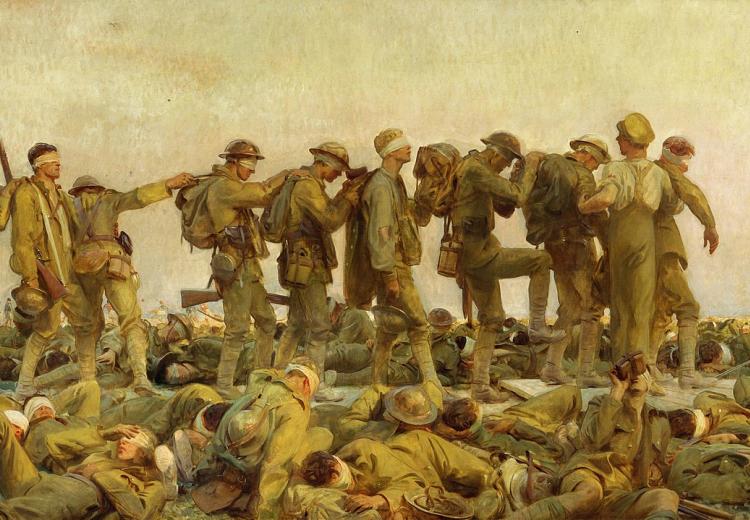Poetry of The Great War: From Darkness to Light

John Singer Sargent's, Gassed (1919)
The historian and literary critic Paul Fussell has noted in The Great War and Modern Memory that, "Dawn has never recovered from what the Great War did to it." With dawn as a common symbol in poetry, it is no wonder that, like a new understanding of dawn itself, a comprehensive body of "World War I Poetry" emerged from the trenches as well. This lesson brings history and poetry together to examine the experiences of those who fought and the psychological, emotional, and physical consequences of war beyond the battlefields.
Guiding Questions
How are poetic devices used to present and interpret WWI?
What is the relationship between a poem's form and its content?
What unique qualities do poems possess for expressing emotions and perspectives?
Learning Objectives
Explore the historical context of "World War I poetry.
Define and understand in context common poetic devices.
Compare and contrast poems via active class discussion.
Create a well-supported analysis of the relationship between a poem's form and its content.
